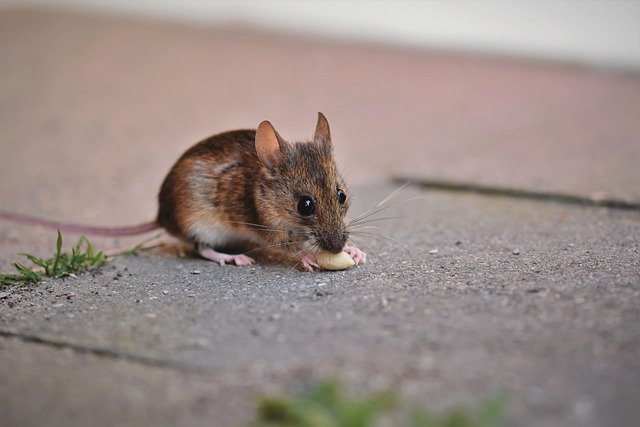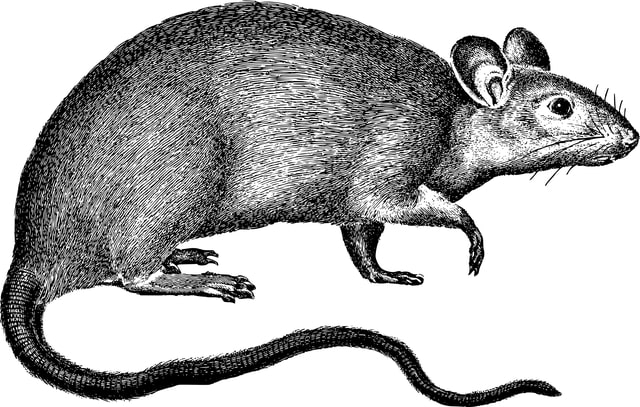South Georgia and North Florida have no shortage of pesky critters that cause problems for the folks that live in this region. Rodents are among the critters that bedevil us, and the peskiest are also the 2 most common rodents: mice and rats. So why are mice and rats so seemingly obsessed with us humans? And how dangerous are they really? In this blog, we answer those questions and many more. Welcome to our identification guide to the rodents of Georgia and Florida.
Types of Rodents in South Georgia & North Florida

While there are many types of rodents in South Georgia and North Florida, these are the 4 that most often get into homes.
- Deer Mice:
- Brown in color
- Approximately 5-8 inches in length
- Prefer less trafficked areas like a shed or pool house/quieter parts of the home like basements, attics, and crawl spaces
- Are attracted to food sources and safe, comfortable locations to nest (such as homes)
- Reproduce rapidly when left unchecked and will expand into new areas when population density gets too high
- Can reproduce every 3-4 weeks when breeding conditions are right, with 1-11 pups per litter
- House Mice:
- More difficult to spot than deer mice, and are much more likely to try and get into a home
- Dusty gray color colored body
- Only 2 1/2 - 3 3/4" long – can easily squeeze through even the smallest of holes
- Leaves behind waste and can cause damage to homes through gnawing and scratching
- Roof Rats:
- Dark brown or black in color with a lighter underbelly
- 6-8 inches long
- Up to 6 litters a year, with up to 8 rat pups per litter
- Excellent climbing skills that allow them to easily access the roofs of buildings
- Norway Rats:
-
- They are brown or gray in color and have a shaggier appearance
- Can grow up to 91/2” long
- When left unchecked they can reproduce rapidly with up to 12 litters a year – each litter with up to 14 rat pups in it
- Enter buildings at ground level and can also gain access by burrowing beneath structures (causing further damage)
The Dangers of Rodents

Rodents are dangerous in 2 key ways:
- They can threaten the structural integrity of your home by scratching and gnawing.
- They can carry and spread diseases.
Diseases are spread through urine, feces, and saliva (yuck), and they can also carry bacteria that can cause food poisoning, and can introduce parasites like fleas, mites, and ticks to your house. According to the CDC, they can directly transmit the following diseases:
- Hantavirus Pulmonary Syndrome
- Hemorrhagic Fever with Renal Syndrome
- Lassa Fever
- Leptospirosis
- Lymphocytic Chorio-meningitis (LCM)
- Omsk Hemorrhagic Fever
- Plague
- Rat-Bite Fever
- Salmonellosis
- South American Arenaviruses (Argentine hemorrhagic fever, Bolivian hemorrhagic fever, Sabiá-associated hemorrhagic fever, Venezuelan hemorrhagic fever)
- Tularemia
Mice and rats are also serious home damagers. According to PestWorld, rodents are responsible for 20 percent to 25 percent of all fires of unknown causes because of their propensity for chewing electrical wiring and gas lines.
What Do Mice and Rats Eat?

Mice and rats love cheese. Or do they? As it so happens, a rodent's primary diet in the wild is built more on carbohydrates like seeds, grains, and fruits – and that preference carries over into household settings. According to Pestworld, rodents prefer the following foods:
- Cookies
- Crackers
- Candy
- Grains
- Peanut butter
With that said, rodents aren’t exactly picky, and keeping these foods out of your home isn't a sure bet to keep rodents out – they’ll eat almost anything.
Rodent Lifespans
Give rodents warmth and access to food and they can live for years. More specifically:
- Mice can live around 2 years
- Rats can live over 2 years
Why does this matter? Naturally, this means if you don’t take care of your rodent problem it could carry on for 2+ years with the exact same rodents. But even more importantly, withholding treatment can give female rodents the opportunity to reproduce many, many times. Here’s exactly how big the problem can get, by the numbers:
- Mice can get pregnant 5-10 times a year and have an average of 6-8 mouse babies per litter which equals up to 80 baby mice per female mouse a year
- Rats can get pregnant up to 7 times a year with 5-12 rat babies a litter, which equals up to 84 baby rats per female rat each year
If that sounds like a lot, it is – but it’s not even the worst of it. When rodents live inside a home they will live in larger groups than normal – after all a comfortable place for rodents is going to be prime real estate for lots of rodents. What this means is that you can have a whole group of rodents in your home, with each female birthing 80+ baby rodents each year. Doing some simple math based on those numbers, it’s not hard to understand how a rodent problem can go from mild to major pretty quickly.
Signs of Rodents
The signs of rodents can be obvious, but sometimes they can be subtle enough that you don’t identify the problem right away. The most common signs, according to the EPA, are:
- Rodent droppings around food packages, in drawers or cupboards, and under the sink
- Nesting material such as shredded paper, fabric, or dried plant matter
- Signs of chewing on food packaging
- Holes chewed through walls and floors that create entry points into the home
- Stale smells coming from hidden areas
How Mice and Rats Get Into Homes
Mice and rats can both fit through tiny spaces that would seem impossible based on their size. However, they are extremely flexible, and getting into homes is one of their unfortunate talents. Some common spaces that might be overlooked by a homeowner that a mouse or rat can squeeze through includes:
- Cracks in the foundation
- Uncovered chimneys
- Gaps around window frames
- Broken screens on windows or doors
- Gaps around ground-level doors
- Flimsy aluminum soffits
- Plastic vent covers or dryer vents
- Holes found in roof eaves and rooflines
- Openings around plumbing, cables, and gas lines
Preventing Rodents
So how can you prevent rodents? According to the EPA, there are a few important things that you can do:
- Seal holes inside and outside the home to keep rodents out. This may be as simple as plugging small holes with steel wool, or patching holes in inside or outside walls
- Remove potential rodent nesting sites from your property, including leaf piles and deep mulch
- Clean up food and water sources in and near your house
- Keep kitchen garbage in containers with tight-fitting lids
- Turn compost piles to cover newly added food scraps
- Stop feeding outdoor birds while you are controlling an infestation or feed only huskless items that leave less residue that can be food for rodents
Getting Rid of Rodents
With all the facts laid out, we can see that there’s always a chance that a rodent problem can become more than a nuisance. It’s also clear that rodents are crafty: even if you take all the DIY measures outlined in this article there’s still a chance that rodents will get in because of even the tiniest oversight. So what can you do about it? If you are in South Georgia or North Florida, contact Dixon Pest Services! Our rodent control services will get rid of rodents and make sure they stay gone, keep your home and loved ones safe, and our preventive pest plan can keep rodents from ever getting indoors in the first place.
Want peace of mind protection for your home? Contact us today and we will schedule a rodent control appointment as soon as it’s convenient to you.